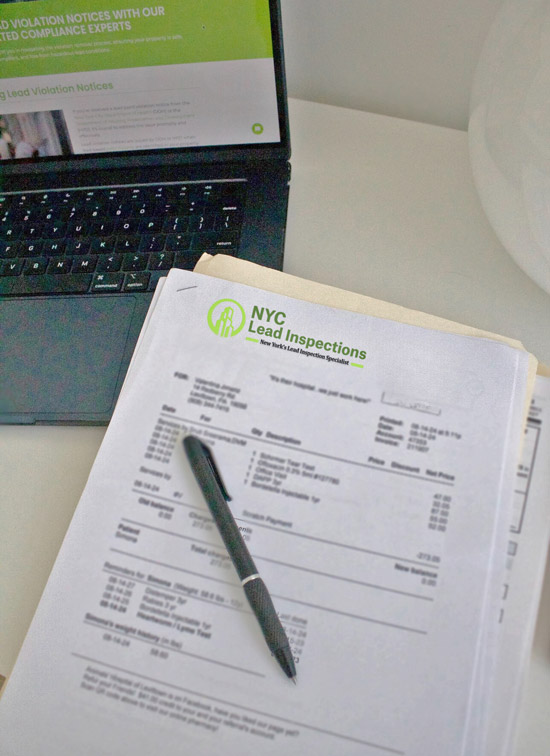Clear HPD Lead Offenses and Shield Your Property Investment
Browsing the complexities of HPD lead violations is important for home owners who prioritize both compliance and renter safety. With the substantial wellness dangers connected with lead exposure, specifically in older structures, attending to these infractions is not merely a governing responsibility but a strategic financial investment in the residential property's long-lasting value. By understanding the actions required to resolve these concerns and the value of timely activity, property managers can improve their reputation and prevent potential fines. The ramifications of neglecting this duty may be extra extensive than you understand, triggering a more detailed assessment of your existing method to residential property management.
Understanding HPD Lead Infractions
Lead offenses recognized by the Department of Real Estate Preservation and Development (HPD) are important concerns that require prompt interest as a result of the major health and wellness threats linked with lead exposure, specifically in children. HPD lead violation clearance. These infractions normally emerge in structures created prior to 1978, when lead-based paints were commonly made use of. Properties that fail to abide by HPD guidelines may deal with substantial lawful and economic consequences

Landlords are bound to attend to these infractions immediately. Failing to do so can result in fines and additional legal action from the HPD. Additionally, maintaining compliance not only ensures renter security but also protects home value and investment. Building proprietors need to proactively take care of lead dangers by conducting routine evaluations and implementing essential corrective measures to stick to HPD standards.
Health Threats of Lead Exposure
Direct exposure to lead presents significant health and wellness risks, specifically for prone populations such as children and expecting ladies. Lead is a hazardous steel that can cause a range of adverse health and wellness results, primarily affecting the nervous system.
Pregnant women exposed to lead might experience problems such as preterm birth, reduced birth weight, and developing problems in their kids. The fetus is especially vulnerable to lead's hazardous impacts, as it can conflict with mind advancement.

Given these major wellness threats, it is crucial for homeowner to resolve lead threats proactively. By ensuring compliance with lead security policies, they not just secure the wellness of their occupants yet additionally guard the value of their residential property financial investments. Understanding and timely activity are crucial to mitigating the dangers associated with lead exposure.
Actions to Resolve Violations
Dealing with lead violations is important for maintaining both occupant safety and home value. The initial action in solving lead infractions is to perform a detailed assessment of the home to identify locations where lead dangers may exist. Engage a qualified lead assessor or threat assessor to anchor execute this assessment, making certain that all potential issues are recorded.
Once the assessment is complete, it is critical to establish a remediation strategy tailored to the specific infractions identified. This strategy ought to abide with regional and federal guidelines and detail the necessary actions to eliminate lead dangers efficiently. Working with a certified lead reduction service provider is recommended, you can look here as they have the competence and equipment to manage lead securely.
After remediation job is finished, a follow-up assessment should be conducted to verify that all lead hazards have been properly dealt with (HPD lead violation clearance). This step is crucial for ensuring compliance with the Division of Real Estate Preservation and Advancement (HPD) policies. Finally, documenting the whole procedure, consisting of evaluations, remediation initiatives, and interaction with tenants, will assist preserve openness and shield your residential property investment in the long term. Maintaining documents will certainly likewise assist in dealing with any type of future issues or infractions that may develop.

Relevance of Timely Activity
Taking punctual activity to deal navigate here with lead offenses is crucial for securing occupant wellness and making certain conformity with lawful commitments. Lead direct exposure presents substantial wellness threats, specifically to prone populaces such as kids and expecting ladies. By attending to these violations swiftly, property owners show a commitment to renter well-being and public security.
Furthermore, timely resolution of lead violations is essential for fulfilling governing demands. The New York City Department of Real Estate Conservation and Advancement (HPD) imposes strict standards pertaining to lead paint dangers, and failure to abide can cause serious charges, consisting of penalties and legal activity. Hold-ups in dealing with these issues can exacerbate the scenario, causing much more extensive removal efforts and raised expenses.
Additionally, resolving offenses quickly fosters depend on and transparency in between residential property owners and renters. Open interaction about lead precaution boosts renter satisfaction and can alleviate prospective disagreements. Eventually, taking prompt action not just protects public health and wellness but likewise enhances the homeowner's track record as a responsible property manager. Focusing on these actions makes sure that both lawful and ethical requirements are met, protecting the lasting viability of the residential property financial investment.
Keeping Residential Or Commercial Property Worth
On a regular basis attending to lead infractions is vital for maintaining home value in today's competitive realty market. Characteristics with unresolved lead issues can encounter substantial devaluation, hindering prospective buyers and reducing rental earnings potential. Purchasers and capitalists are significantly attentive regarding health and wellness and safety requirements; consequently, residential properties lacking compliance with lead laws may be considered as responsibilities rather than assets.

Additionally, homes that demonstrate a positive approach to lead infraction remediation signal a dedication to occupant safety and total residential property maintenance. This not just boosts marketability yet also fosters lessee retention, decreasing turn over costs. Residence that are certified with health codes usually attract higher-quality occupants willing to pay a premium for a secure living environment.
Furthermore, keeping proper documentation and a clear background of lead evaluations and removal can further reinforce building value. This transparency develops trust fund with prospective buyers and renters, showing that the building has been well taken care of and is complimentary from unsafe problems.
Ultimately, prioritizing lead compliance is not simply a regulative responsibility; it is a critical investment in the long-term value and value of your home. Shielding your financial investment today ensures a more lucrative tomorrow.
Conclusion
In conclusion, addressing HPD lead offenses is critical for securing both tenant health and residential or commercial property financial investments. Prioritizing lead safety shows a responsible strategy to residential or commercial property management, reinforcing the relevance of preserving a secure living environment for all residents.